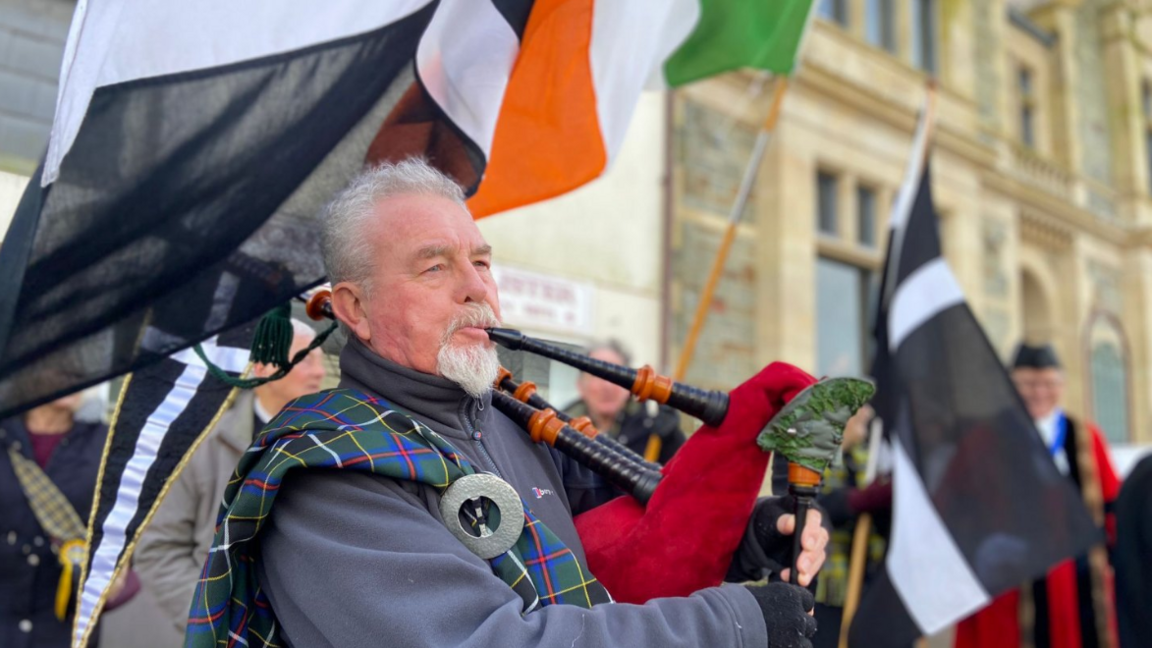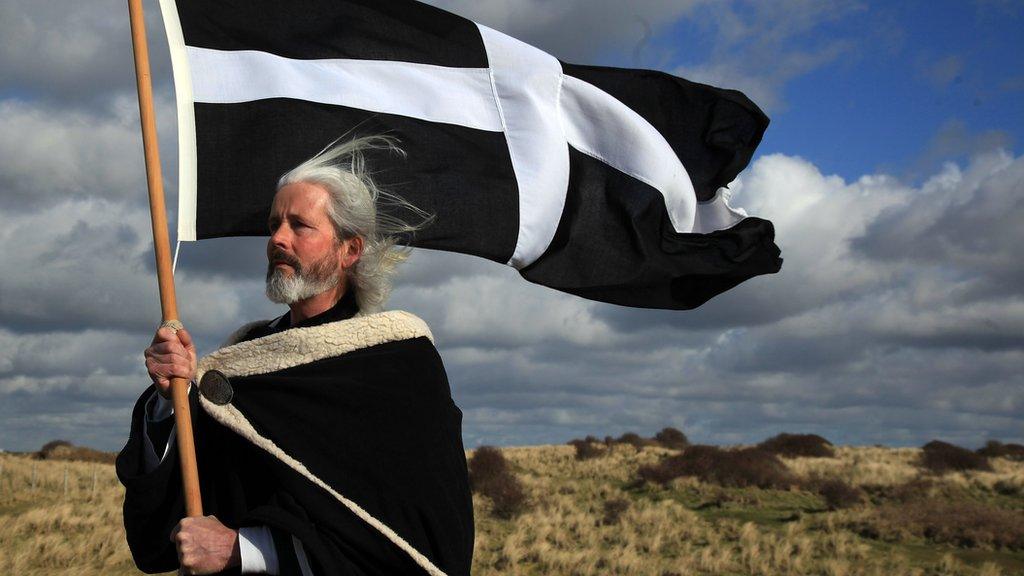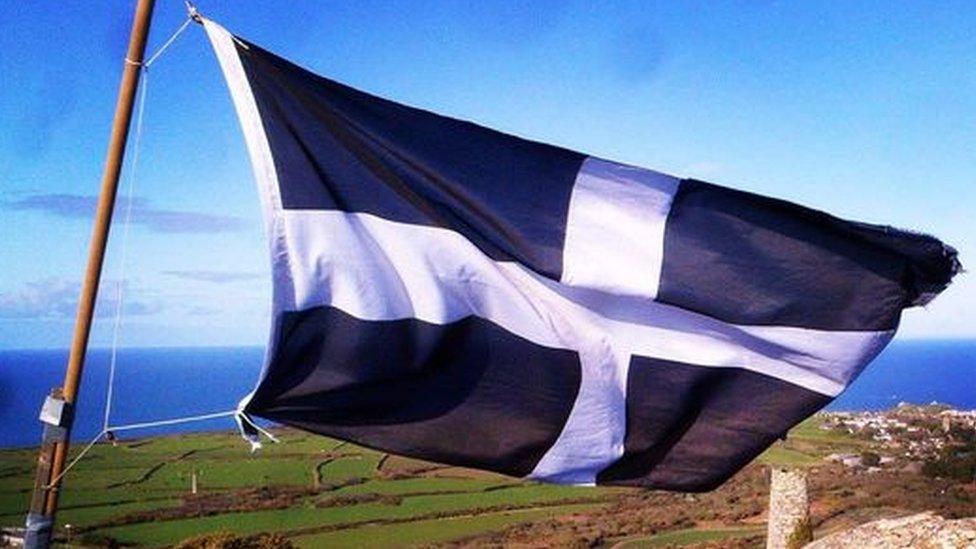Music and parades mark St Piran's Day in Cornwall

The Cornish flag represents white tin flowing from the black rock, which St Piran is said to have discovered
- Published
People have been celebrating St Piran's Day in Cornwall amid a resurgence of interest in the event honouring the patron saint of tin miners, also considered the county's patron saint.
Hundreds turned out for parades in Cornish towns, including Bodmin and Launceston, while one woman took the celebrations underground.
Cornish Bard Pat Tremain took a St Piran's flag deep in the Ogof y Ci cave system in the Bannau Brycheiniog in Wales.
Andy Rowe, from the Oggymen band, which sold out at the Hall for Cornwall in Truro, said: "The last 15 years has really galvanised the Cornish community in that everyone does something on St Piran's Day."

Bodmin welcomed everyone to the celebrations
"All the pubs sing Trelawney [used as an unofficial anthem for Cornwall] and there are big parades in Truro and Penzance," said Mr Rowe.
"It's a really special day on the Cornish calendar."

Cornish Bard Pat Tremain with her St Piran flag deep underground

St Piran's Day is marked at Truro Cathedral
What is St Piran's Day?
St Piran's Day, Gool Peran in Cornish, is on 5 March and celebrates one of the patron saints of Cornwall, Saint Piran, who is also the patron saint of tin miners.
Legend tells that St Piran was a 6th Century abbot in Ireland where he performed miracles, such as raising soldiers from the dead who were slain in battle.
However, a group of local kings grew wary of his powers so flung him into the sea with a millstone around his neck.
The legend says St Piran floated over to Perranporth beach on the north coast of Cornwall and built a small chapel in the sand dunes, where people travelled to hear him preach.
This is now known as St Piran's Oratory or the "lost church", and is the setting of an annual march and performance on the Sunday closest to 5 March.
The Cornish Flag, a white cross on a black background, represents white tin flowing from the black rock, which St Piran is said to have discovered.
According to the legend, St Piran lived for 200 years, drunkenly falling down a well to his death.
Follow BBC Cornwall on X (formerly Twitter), external, Facebook, external and Instagram, external. Send your story ideas to spotlight@bbc.co.uk, external.
Related topics
Related stories
- Published5 March 2024

- Published5 March 2023

- Published26 April 2016
